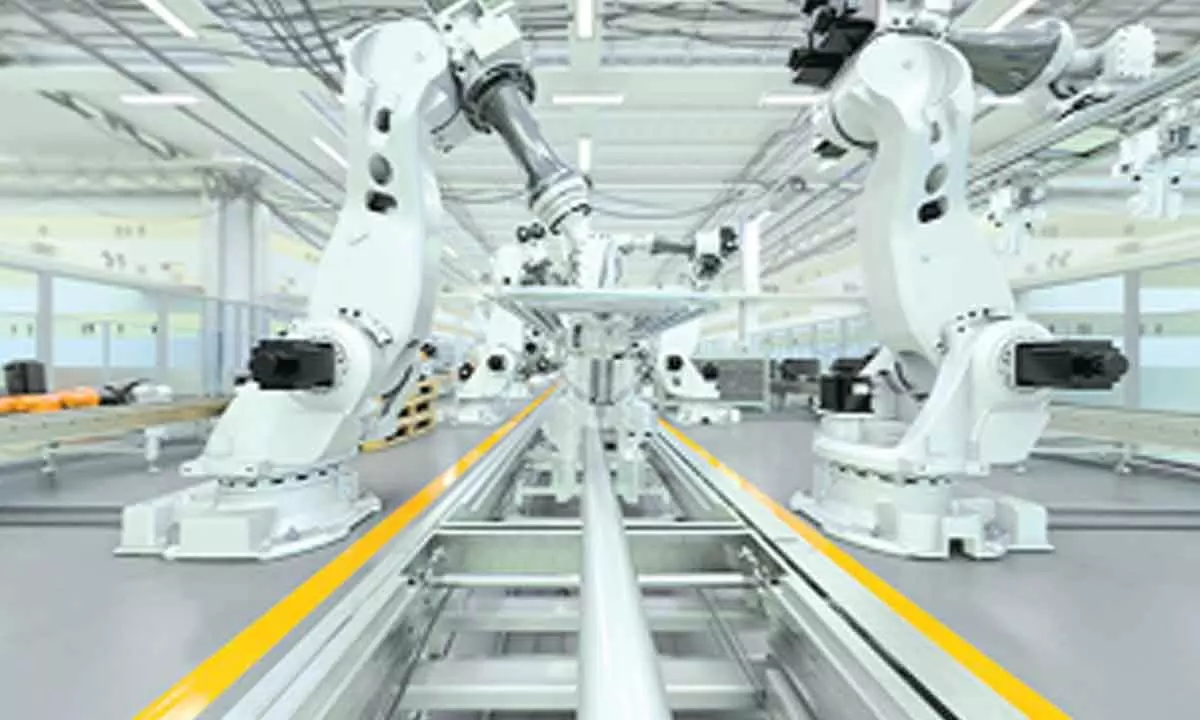Automation is the first step toward large-scale optimization across the board
With the onset of Covid, which has drastically impacted supply chains, automation has become from a ‘nice to have’ to necessity
image for illustrative purpose

Automation uses machines to run a production system without as much human involvement. The idea of automation in the manufacturing sector is not a recent one; it has existed for many years. The primary goal of automating any process is to mechanise the labour that was previously done by humans in order to lessen their workload and boost productivity.
Automation was initially only employed in the automotive industry, particularly in industrial settings. Automation technology has evolved to be increasingly computerised, or computer based as a result of technological advancement. This technology has advanced over time and grown increasingly complex.
In present times, the automation technology is not just restricted to the automobile industry but has matured a lot and is used in many industries especially in the manufacturing sector. Automation technology has advanced a lot and has gained recognition of its own, the most famous and used branch of it is automation through robots or robotics technology.
Robotics is a widely used automation technique/process across the globe. Robots have changed the way of working in the manufacturing sector. They possess human-like traits that can be operated through software. Organizational tasks are streamlined by the use of robots, which increases their flexibility, responsiveness, and precision. Additionally, as routine and repetitive jobs are carried out by robots, it increases not only employee productivity but also employee satisfaction.
The robotics market in India has gained momentum as a result of industrial expansion, digital revolution and adoption of automation at a large scale. In terms of annual installation, the industrial robotics market in India stood at 5,000 units in 2019 and is estimated to reach 11,760 units by 2025, expanding at a compound annual growth rate (CAGR) of 14.41 per cent during the 2020-2025 period. These industrial robots can be automatically controlled, programmed and manipulated in three or more axes. Based on mechanical configuration and level of autonomy, these robots perform various material handling operations such as movement, picking, sorting, and shuttling etc. For manufacturers, robotic automation has produced a number of advantages:
Boost productivity and throughputs: Increasing productivity is a main concern for all industries, and automation has been a blessing for them. It has greatly increased the manufacturing sector's productivity. The robots have freed the labour from doing monotonous duties so that they may concentrate on more fruitful tasks and use their time and energy to complete better, more productive work. With low down time, automation also ensures high throughputs to meet current day demands.
Scaling opportunities: Automation, especially the flexible automation solutions using mobile robots such as AMRs, AGVs, mobile picking vehicles are very convenient to scale up/down as per the material handling requirements that are decided by seasonal demands or promotions etc. These solutions enabled with modular software solutions provide a seamless integration and operational ease.
Consistency and Uniformity: Robots are controlled by software, which guarantees consistency and uniformity. As the duties are carried out with the aid of machines there's no such element as fatigue or tiredness. Robots work with equal consistency, so the possibilities of mistakes are decreased to zero to negligible and maintain uniformity in products for high satisfaction. Also, the wastage is minimised, and the methods are computerized.
Enhanced customer experience: Automation reduces the human intervention in the production process and works with more accuracy and precision. The chances of errors are reduced by robots and qualified products are given to consumers as well as employees are relieved from monotonous and repetitive work so that they can focus on other activities. Employees will have more time to communicate to consumers and can easily enhance customer experience through personal touch that will lead to high customer satisfaction.
With the onset of Covid, which has drastically impacted supply chains, automation has become from a 'nice to have' to necessity. Complete end to end automation solutions that automate all the processes in a warehouse from inbound, storage, picking, and outbound to point solution providers that automate individual processes where high throughputs are required. Automation vendors like Addverb, can provide end to end solutions with large portfolio of products such as AGVs, AMRs, picking technologies, ASRS, shuttles, IoT solutions and software suite.
(The author is Head (Product Management) at Addverb)

